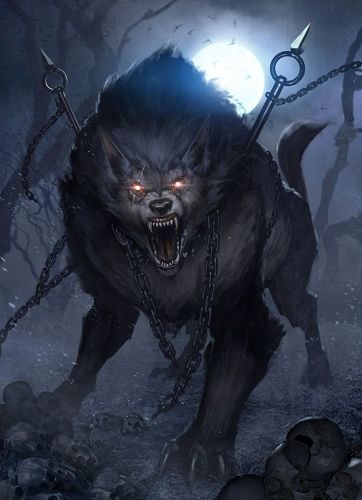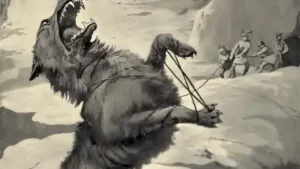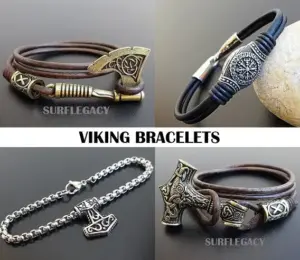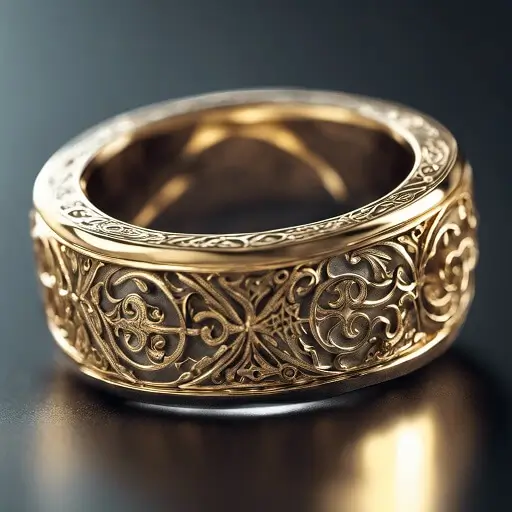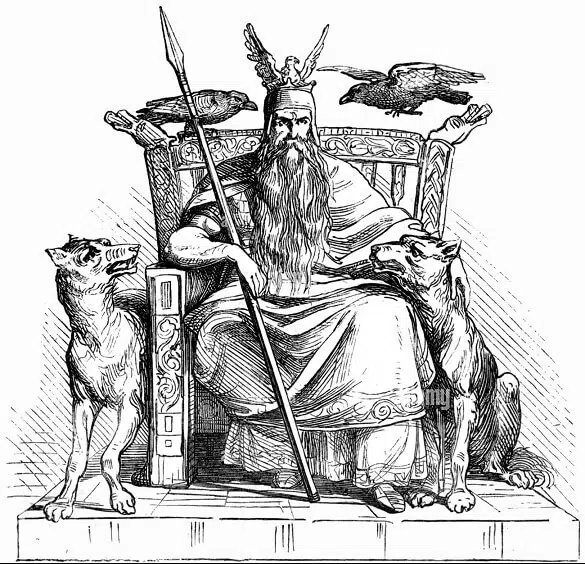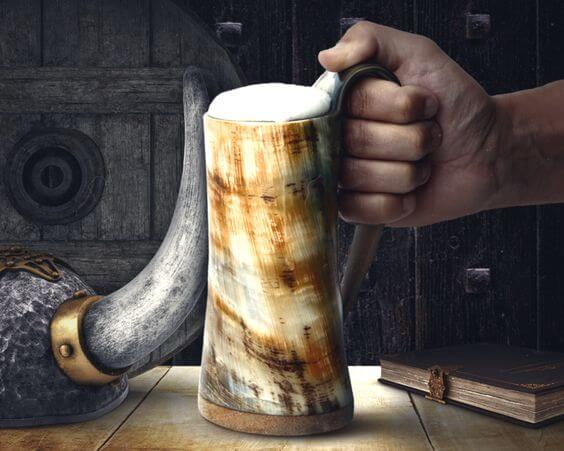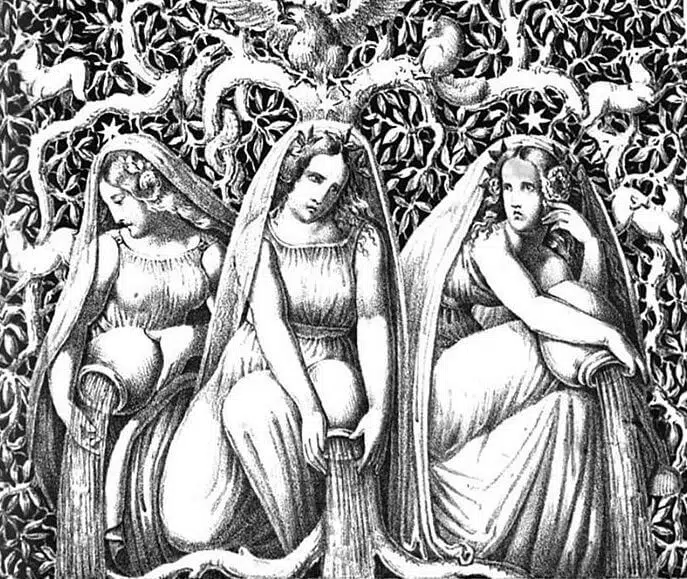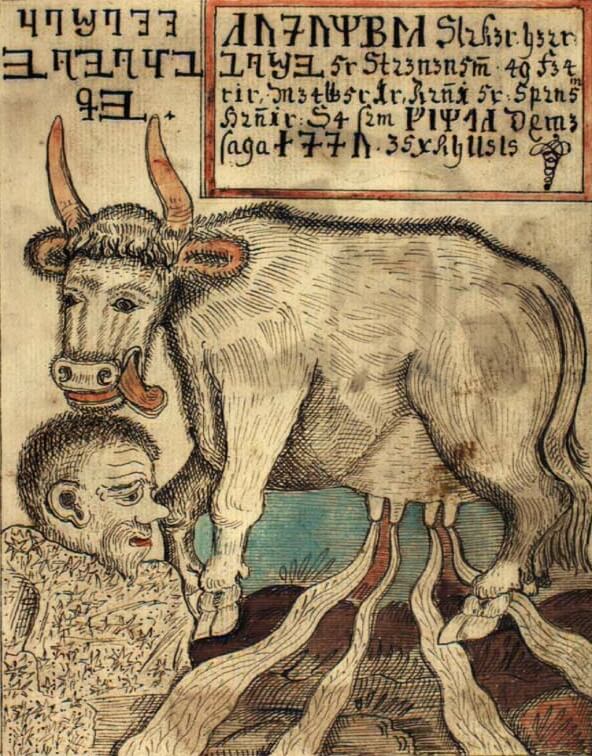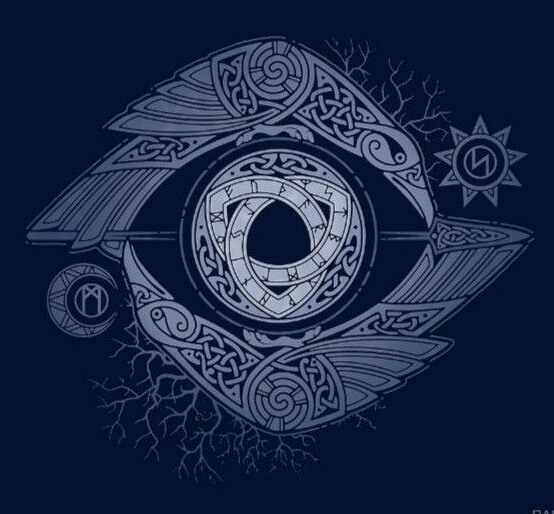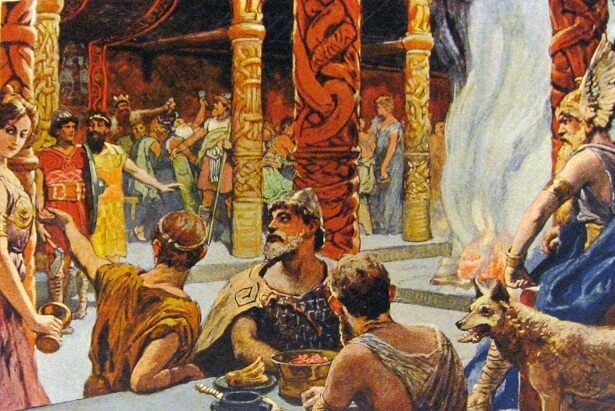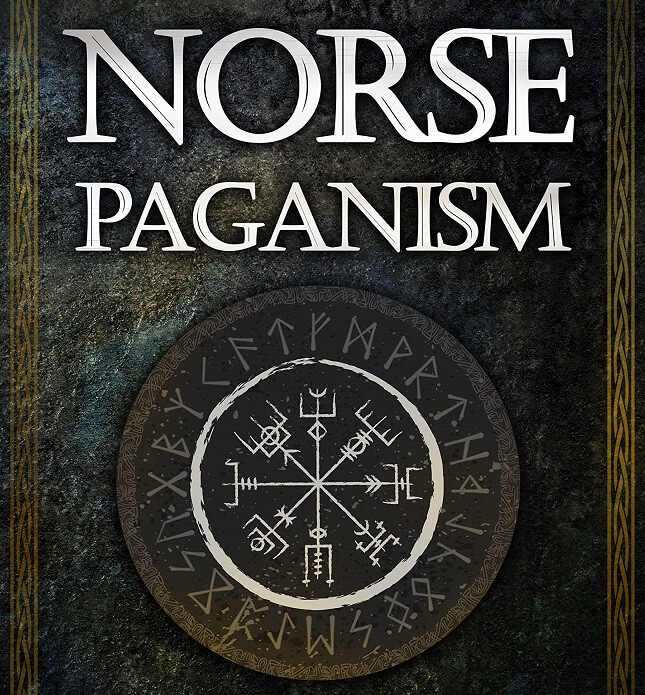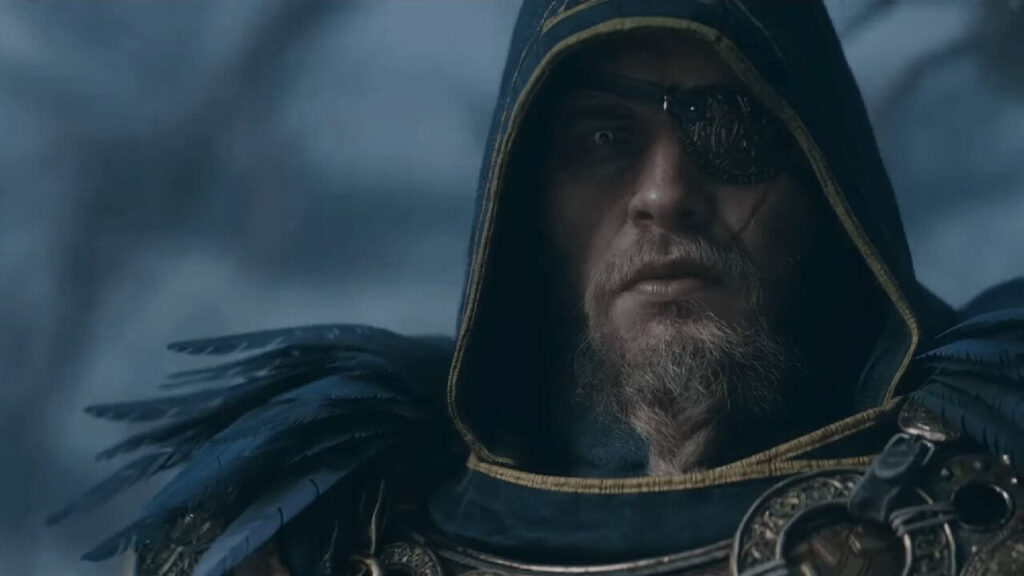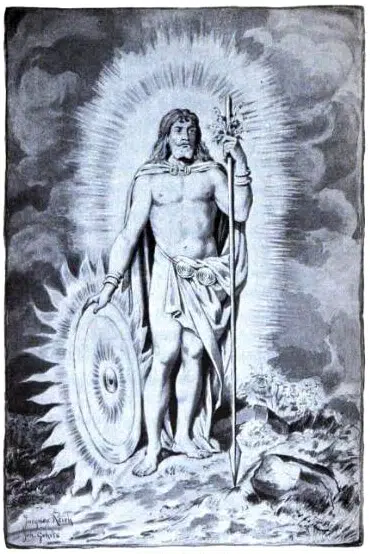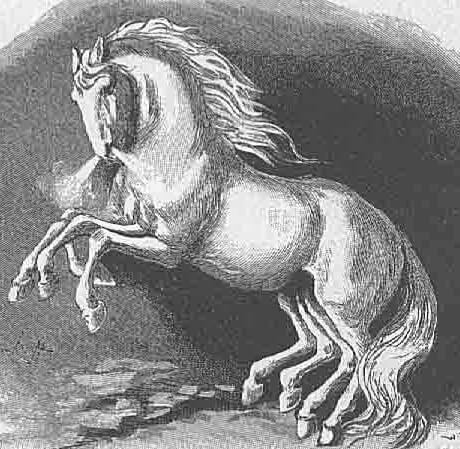Fenrir, also known as Vanargand, Fenrisúlfr or Vánagandr, is a giant legendary wolf from Norse Mythology.
Fenrir’s name, which means wolflike monster, is also used metaphorically to refer to giants, compared to wolves in several texts.
Fenrir was generated by the union of the god Loki with the giantess Angrboða: born with him the serpent Jormungand and his sister Hel. Later, a witch raised him in the iron forest of Jarnvior
Key Takeaways
- Fenrir is a giant wolf in Norse mythology, the son of Loki and Angrboða. His name means “he who dwells in the marshes.”
- The gods raised Fenrir but he grew so large and fierce that they feared him, based on prophecies foretelling he would bring disaster.
- The gods tried chaining Fenrir twice with normal chains, but he broke free each time, so they commissioned an unbreakable magical chain called Gleipnir.
- Fenrir didn’t trust Gleipnir, so agreed to be bound only if one god put a hand in his mouth as surety. Tyr agreed and lost his hand when Fenrir couldn’t break free.
- Fenrir is bound until Ragnarok, when he will break free and fight the gods. He will kill Odin but be killed by Víðarr.
Fenrir is a very special wolf
Just like his father, he has an uncommon intelligence and he can even speak, making him a strong opponent both physically and mentally.
When the gods knew that Fenrir was raised together with Hel and Miðgarðsormr in Jötunheimr, the land of giants, they decided to show them to Odin so that he could decide what to do with them: the prophecies said that from such creatures nothing but misfortunes would come
While Hel was sent to reign in the underworld, and Jormungand sank to the bottom of the ocean, not knowing what to do with Fenrir, the gods kept him with them.
By order of Odin he lived in Ásgard. He grew in size and ferocity, so that only one god, Týr, had the courage to bring him regular food.
Despite the alarming prophecies that from this terrible creature would come only misfortune, the gods decided to chain him, but the task did not seem easy.
The gods prepared a chain and proposed to the wolf to be tied to measure his strength in an attempt to break it. But Fenrir broke it with ease, and the same happened with a second, stronger chain.
The gods, seeing that Fenrir continued to grow disproportionately, decided to send a servant of Freyr to the kingdom of the elves to make a magical chain. Gleipnir (“that devours”, or “that mocks”) was then built by certain dwarves with the sound of a cat’s step, rock roots, a woman’s beard, bear sinews, bird or milk saliva, and fish breath
It is from that day, it is said, that women no longer have beards, cats pounce no sound, and no roots grow under rocks. The rope was very thin and looked like a strip of silk, but it was impossible to break it.
The gods then went to an island named Lyngvi, on Lake Ámsvartnir, and there summoned Fenrir.
But the wolf, upon seeing that chain looking so fragile, became suspicious, because he feared some spell or deception. After a brief discussion, he agreed to be bound, but on one condition: no one would use Gleipnir until someone would put his hand over his mouth, as a sign of fidelity to the pact.
Týr accepts, and although he knows that in this way his hand would almost certainly be sacrificed, As soon as the wolf tried to free himself from Gleipnir, he was unable to do so, even though he used all his terrible strength. The gods burst out laughing at the spectacle, all except Týr. Týr, predictably, had his hand cut off.
It was then taken the end of the chain, called Gelgja (“pole”; in other sources it is mentioned just a wooden stake, not the end of the chain), and fixed to the ground with two boulders, named Gjöll (perhaps “wide” or perhaps “sharp”) and Þviti (“stone stuck to the ground”).
Image Dorothy Hardy/Myths of the Norsemen by H. A. Guerber
During the action, Fenrir tried several times to bite his captors, so they put a sword between the two jaws, this way he could not bite anymore.
Since then Fenrir remains chained on the island, and so will remain until the end of the world. Mad with rage, the great wolf howls, and drools, so that from his saliva was formed a river, named Ván (literally “waiting”).
Ragnarök
When the end of the world, the Ragnarök will come, all ties are broken, and even the magical chain that binds Fenrir will melt. The wolf, free again, will attack the Gods, along with the other forces of disorder and darkness.
He will be so big and will open his mouth with such ferocity, that the lower jaw will touch the ground and the upper one the sky: but if there was more space, he will open it even wider.
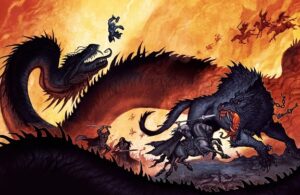
A scene from Ragnarok with Frenir
Fenrir will be so big and strong that he will devour the very Father of All, Odin. Then he will engage in a mortal fight with Víðarr, Odin’s son, destined to avenge his father.
Víðarr will stop the lower jaw of Fenrir with a foot, and the upper one with a hand, breaking them. He will then kill him with a sword strike to the heart.
Fenrir – FAQs
Why did the gods raise Fenrir if they feared him?
They hoped to avert the prophecies by keeping him close rather than banishing him.
How was the magical chain Gleipnir made?
It was crafted from impossible materials like a cat’s footfall, a woman’s beard, and mountain roots.
Why did Fenrir agree to be bound by Gleipnir?
The gods challenged his strength and pride, daring him to try to break free.
Who put their hand in Fenrir’s mouth?
The god Tyr sacrificed his hand to Fenrir to seal the bargain.
How does Fenrir break free at Ragnarok?
The magical chain Gleipnir melts, releasing Fenrir.
Who does Fenrir kill at Ragnarok?
He kills Odin, the king of the gods.
Who kills Fenrir at Ragnarok?
Odin’s son Víðarr kills Fenrir after the wolf kills Odin.
Why couldn’t Fenrir bite after being chained?
The gods wedged a sword in his mouth so he couldn’t close his jaws.
What is the river created by Fenrir’s drool called?
The river Ván, meaning “expectation.”
How big will Fenrir grow when he breaks free?
So big his jaws will reach from the heavens to the earth.
Shop Viking Jewelry
Are passionate about Vikings or Norse mythology?
Finding the ideal piece of Viking Jewelry can be challenging and time-consuming, especially if you lack inspiration or don’t know where to look.
Surflegacy, has you covered. We have a wide range of Handmade Jewelry in various styles, shapes, colors, and materials, to accentuate your Viking spirit and look. Do not hesitate to visit our selection HERE
Whatever you wear, you’ll find the ideal trendy piece to complement your wardrobe. Our jewelry is designed to be worn every day, no matter where you go or what season is. Are you ready to step up your wardrobe game?

